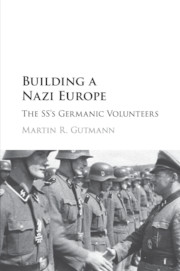Book contents
- Building a Nazi Europe
- Building a Nazi Europe
- Copyright page
- Dedication
- Contents
- Acknowledgments
- Note on Names
- Common Abbreviations and Foreign Terms
- Introduction
- 1 Germanic Dreams
- 2 Restless Youth
- 3 Joining the Burgeoning Waffen-SS
- 4 Building a Germanic Europe
- 5 Molding the Germanic Political Soldier
- 6 The End of the Germanic Project
- Conclusion
- Bibliography
- Index
- References
Bibliography
Published online by Cambridge University Press: 02 March 2017
- Building a Nazi Europe
- Building a Nazi Europe
- Copyright page
- Dedication
- Contents
- Acknowledgments
- Note on Names
- Common Abbreviations and Foreign Terms
- Introduction
- 1 Germanic Dreams
- 2 Restless Youth
- 3 Joining the Burgeoning Waffen-SS
- 4 Building a Germanic Europe
- 5 Molding the Germanic Political Soldier
- 6 The End of the Germanic Project
- Conclusion
- Bibliography
- Index
- References
- Type
- Chapter
- Information
- Building a Nazi EuropeThe SS's Germanic Volunteers, pp. 209 - 224Publisher: Cambridge University PressPrint publication year: 2017



